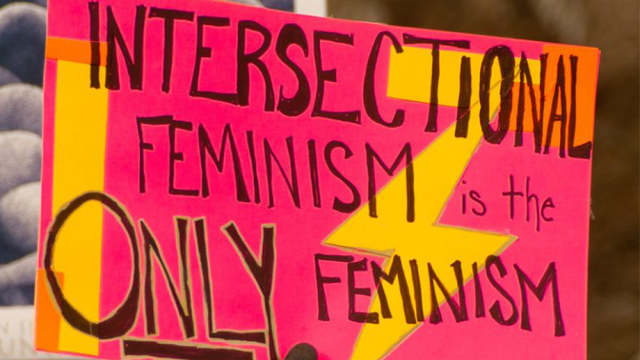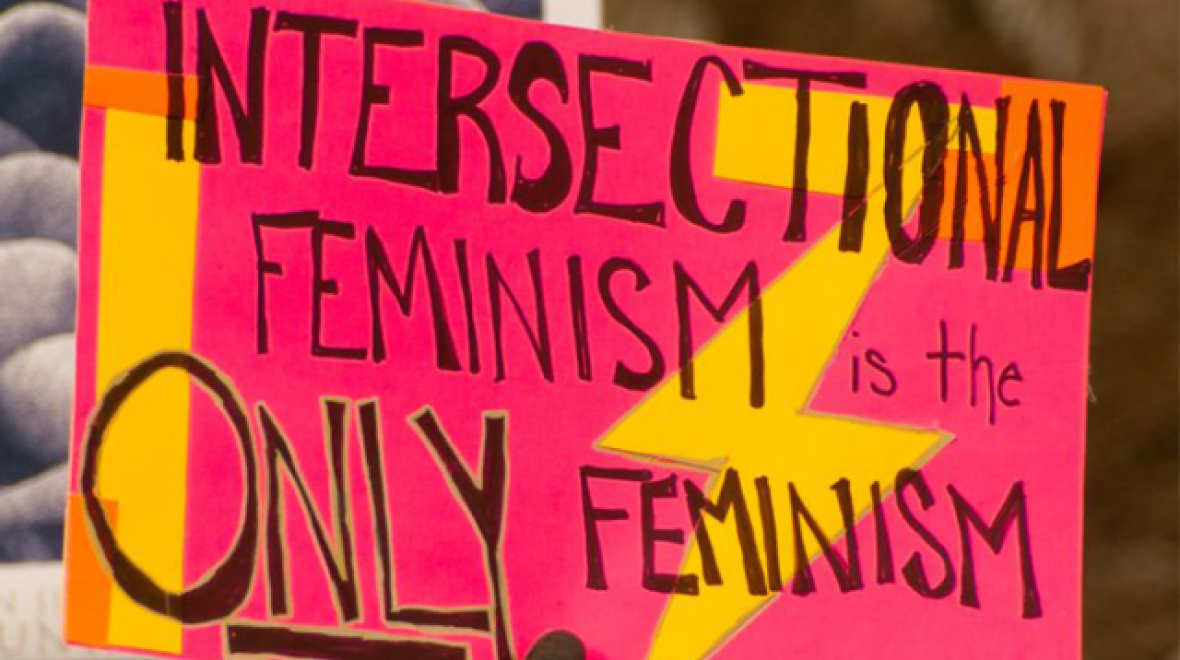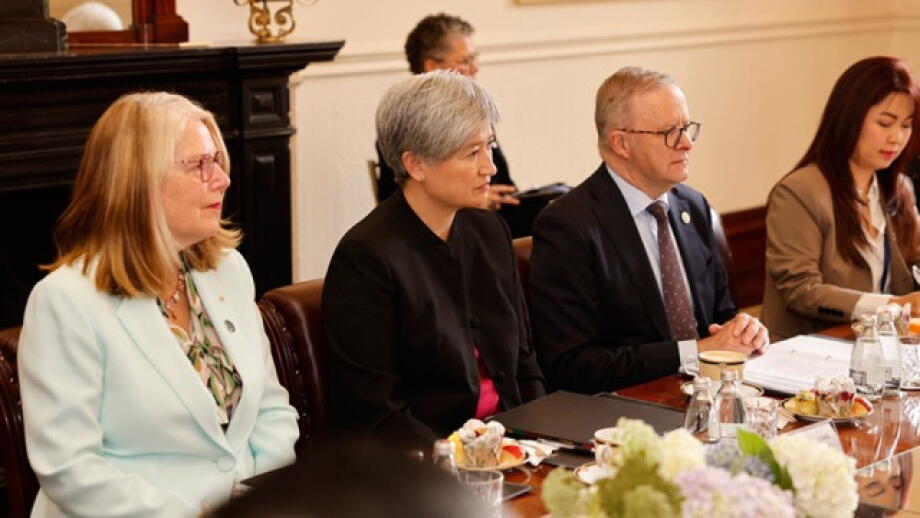If we’re serious about promoting equity and inclusion in the workplace, it is vital to take an intersectional feminist approach that centres the lived experiences of underrepresented groups – be that the LGBTQ+ community, people with disabilities, those from ethnic, racial and cultural minorities, or others. Only by addressing the specificities and interconnections of the experiences and challenges faced by these groups, is it possible to identify and combat structural inequalities.
When it comes to conversations around gender equality, particularly in relation to work and leadership, too often it is still the experiences of white, cis, heterosexual, middle/upper-class women that is platformed as the “universal experience”. To move beyond this, the discussion needs to evolve past a generalist and meritocratic viewpoint and towards an intersectional one. This way we can understand the depth of the countless structural barriers that hinder the professional development of all women, but particularly those from marginalised groups.
Although women of all backgrounds report feeling invisible in professional environments, the literature points out that the work experience of women facing multiple intersectionalities is more precarious. Non-white women, for instance, find themselves at the intersection of gender and race and, as members of both minorities, face specific challenges regarding their sense of “belonging” in the workplace. The career of black and brown women, especially when considering countries outside of the African continent, is permeated by a series of challenges and needs that reflect structural inequalities across the world. For decades, they have been identified as the population that experiences more precariousness in work relationships and has fewer opportunities for social mobility than their white counterparts. Since the beginning of their careers, they have faced racial and gender discrimination in the job market. In addition, the lack of representation in leadership positions and the absence of appropriate professional development opportunities contribute to the perpetuation of inequalities, hindering their career advancement.
Evidence indicates that black women often suffer high levels of stress, lack of confidence, low self-esteem, fear of vulnerability, marginalization, silencing and objectification, resulting in impaired mental health, invisibility, feelings of inauthenticity and inadequacy and low career progression. Additionally, it is common for them to avoid taking a stand and expressing opinions in decision-making moments, but in doing so, they are also less associated with leadership qualities. Therefore, the career of black and other non-white minoritised women is marked by the dilemma of confronting or ignoring racism, sexism and further adverse conditions, which represents a great source of stress. The effort taken to negotiate these dynamics on a daily basis and continually be forced to decide whether to confront or ignore barriers leaves less energy and time to engage in other behaviors, such as networking and work activities that may lead to promotions. This phenomenon is called racial battle fatigue, which encompasses the social, physiological and psychological responses to stress that non-white people experience in mostly white institutions and professional contexts.
Many LGBTIQIA+ individuals navigate similar barriers, particularly trans or gender diverse groups, as those who publicly “transgress” gender norms are targets of explicit and implicit aggressions, such as discrimination and harassment, verbal abuse, name-calling, malicious jokes, pejorative comments and criticism. For example, evidence suggests that trans people frequently experience transphobia, financial difficulties, little or no access to educational/work opportunities and day-to-day humiliations – such as issues accessing a bathroom that aligns with their gender identity and difficulties in rectifying their name and gender on official documents. Additionally, gender transitions often take place during working years and there is usually a lack of adequate organizational support and accommodation for their specific needs during the transition process.
Therefore, those involved in policy-making and research addressing gender inequalities should reflect on the specific conditions that intersectionality demands from workplaces and beyond. It is necessary to develop targeted solutions to overcome these barriers – for example, laws to encourage organisations to hire more trans and gender diverse people, besides specific strategies to embrace diversity as a whole. It is necessary to “decolonize” gender, ensuring that underrepresented voices are being heard and are given space to speak for themselves. Examples of decolonization in the policy-making field are noticing how often minorities sit at the table to discuss what works for them and what does not. Decolonizing academia would involve, for instance, asking questions such as: How many scholars from minoritized groups are being acknowledged and valued for their work? How much of our research questions consider intersectionality at the very core of the research conception?
As part of this decolonization, we must also raise awareness of these issues by shining a spotlight on the discrimination, phobia, racism and microaggressions that people from minorized groups face on a daily basis. By understanding feminism as a way to end all forms of domination, oppression, and privilege that interact with sexism and gender biases – including racism, classism, colonialism, heterosexism, ethnocentrism, white supremacy, ageism, and ableism – gender equality initiatives should propose a multicultural and critical view, bringing intersectionality to the fore of all conversations. Additionally, the minoritised people should not be the only ones responsible for bringing the intersectionality topic to the table – those who belong to privileged groups should also commit to this.
While it is necessary to recognize the various structural changes that have been achieved over the years, there are still many oppressive mechanisms to overcome and doing so is a huge and time-consuming task, particularly as social structures and norms take time to adapt and change. To face these challenges, it is fundamental that inclusive environments, affirmative action policies and specific programs are created in order to promote equity and diversity in all spaces. By discussing and seeking specific solutions to the needs of people in all of their intersectionalities, we are looking for ways to question the structuring systems of oppression, rather than just trying to fit people into preconceived boxes of existence which bear no resemblance to the reality of their lived experiences.
This article was written by GIWL Visiting Professor, Ligia Carolina Oliveira-Silva. To learn more about these issues, you can read Ligia’s research on the workplace experiences of transgender women and black women (please note, these are published in Portuguese). For an English language resource, you can also read Michelle Ryan’s research on the workplace experiences of BAME professional women.
You may also like
Calls to address ‘alarming rates’ of gendered violence against Victorian healthcare workers
Our new report finds that gendered violence is widespread in the Australian healthcare system.
The precarity of progress: how traditional gender roles can undermine equality in times of crisis
As the Covid-19 pandemic unfolded, a subtle yet significant shift occurred in homes around the world: the division of household labour became more traditional.
Fixing women or fixing the system?
Australia has made remarkable strides in gender equality in diplomacy, achieving near parity in its Department of Foreign Affairs and Trade.




